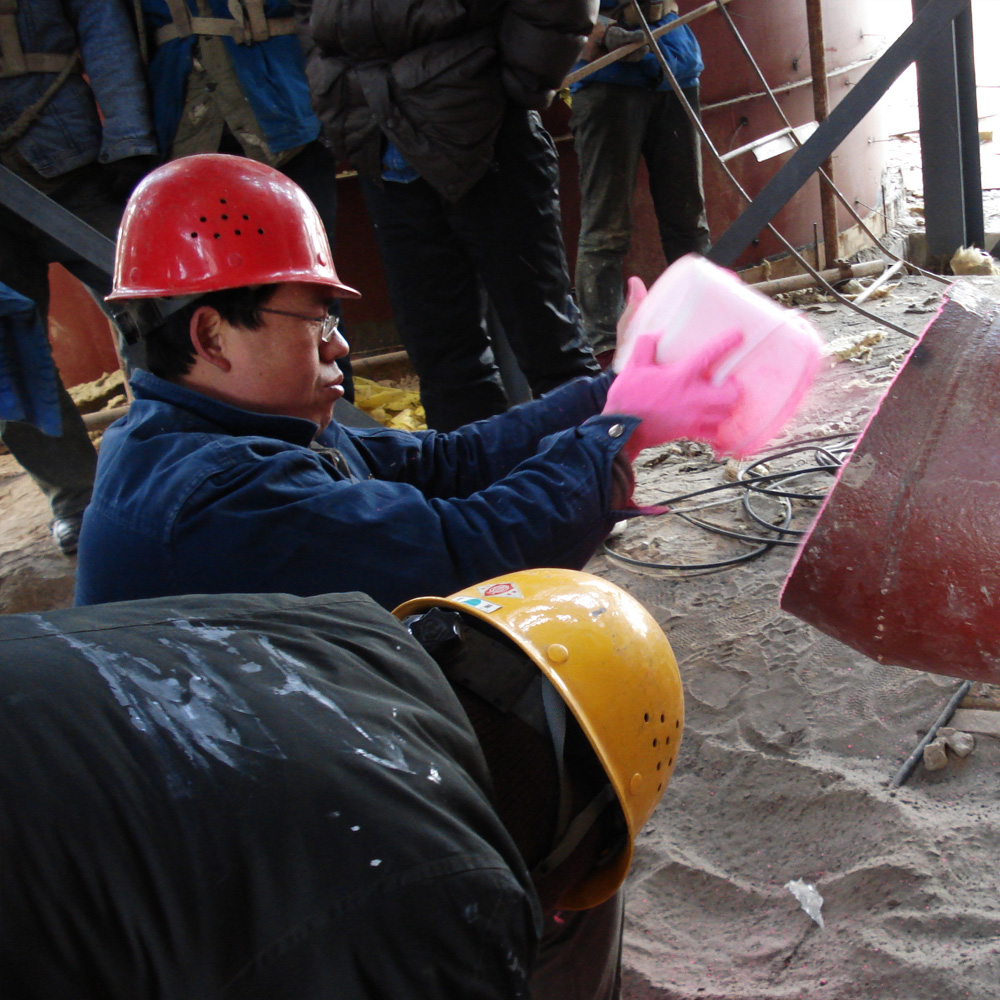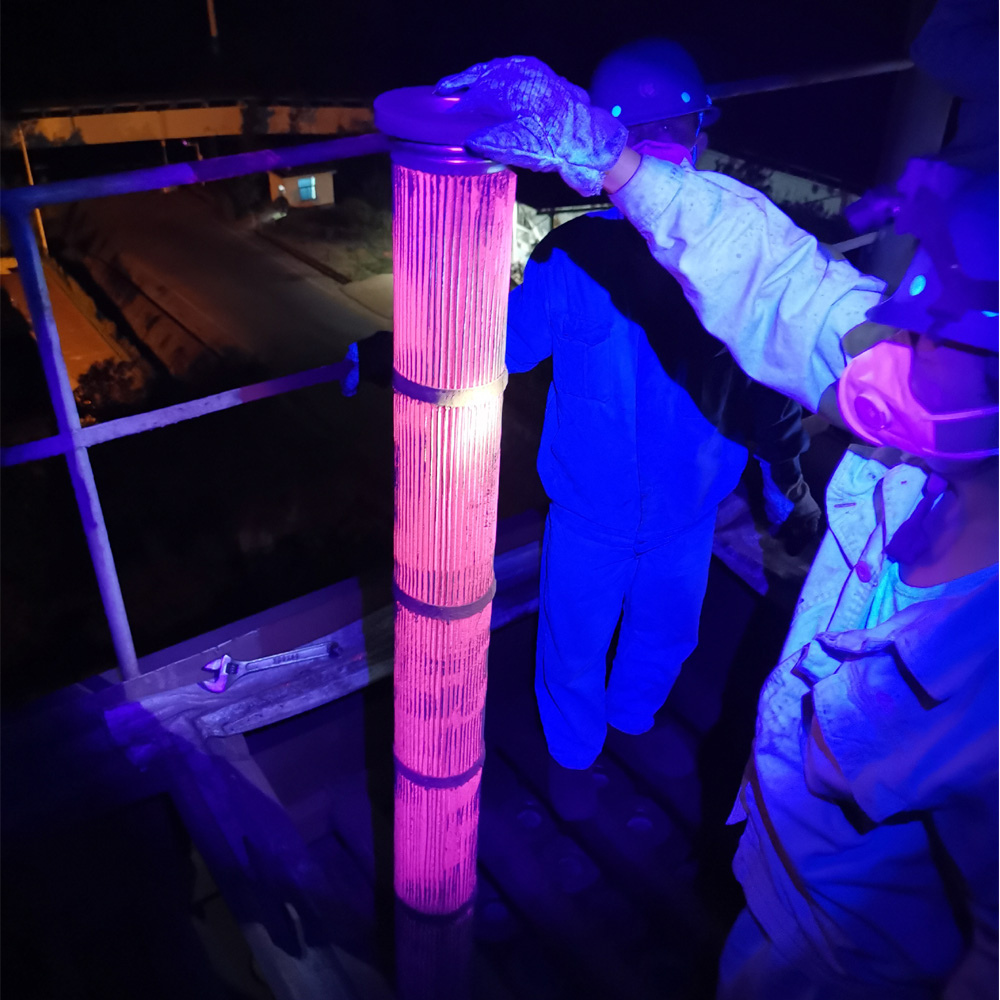Large scale back blowing bag filter is divided into positive pressure type (also known as press in type) and negative pressure type (also known as suction type). It is widely used in steel plants, smelters, cement plants, carbon black plants, power plants and other enterprises to purify and recover the smoke and dust produced by smelting, crushing, screening and combustion. In order to understand the working characteristics of leakage detection, it is necessary to understand the structural characteristics of the reverse blowing bag filter
1. When the dust on the filter bag increases continuously and the resistance rises to the specified value, the dust cleaning begins.
2. Because the air inlet pipes of each room of the equipment are connected and in a negative pressure state, due to the negative pressure suction effect of the adjacent room, the air flow is sucked into the filter bag room through the reverse blow pipe. Through the filter bag, the air flow enters the inner side from the outside of the filter bag, and is sucked into the adjacent room through the ash hopper and the air inlet pipe of the room for discharge. At this time, the filter bag is deflated.
3. The dust cleaning mode of large-scale reverse blowing bag filter depends on single chamber reverse blowing mode. When reverse blowing, close the exhaust pipe through the reversing valve, open the reverse blowing pipe, and cut off the exhaust air of single chamber.
4. The dust inside the filter bag is then shaken off and settled into the ash hopper to complete the ash cleaning of the single chamber. Under the control of the ash cleaning actuator, the other chambers carry out the same sequence of ash cleaning, and the ash cleaning stops at the set time.
Working principle of back blowing bag filter
The large-scale low-pressure reverse air pulse bag filter is mainly composed of upper box, middle box, ash hopper, air inlet equalizing pipe, support filter bag and injection device, ash unloading device, etc. the dust gas enters into each compartment ash hopper from the air inlet equalizing pipe of the bag filter, and under the guidance of the ash hopper guiding device, the large particles of dust are separated and directly fall into the ash hopper, while the fine dust evenly enters into the dust hopper The clean gas enters into the upper box through the filter bag and is discharged into the atmosphere through the off-line valves and exhaust pipes. With the progress of the filtering condition, the dust on the filter bag accumulates more and more. When the resistance of the equipment reaches the limited resistance value (generally set as 1500pa), the dust removal control device will automatically close the first chamber according to the set value of the differential pressure or the set value of the dust removal time After the line valve, open the electric control pulse valve according to the set procedure to stop the air injection, use the compressed air instantaneous injection to make the pressure in the filter bag increase, shake off the dust on the filter bag (even if the fine dust can be cleaned) to the ash hopper, and discharge it by the ash discharge mechanism.
Based on the above characteristics, the selection of powder feeding point should be determined according to the specific structure of the dust collector and the air inlet mode. The loss of phosphor and the amount of phosphor needed to be recalculated.




